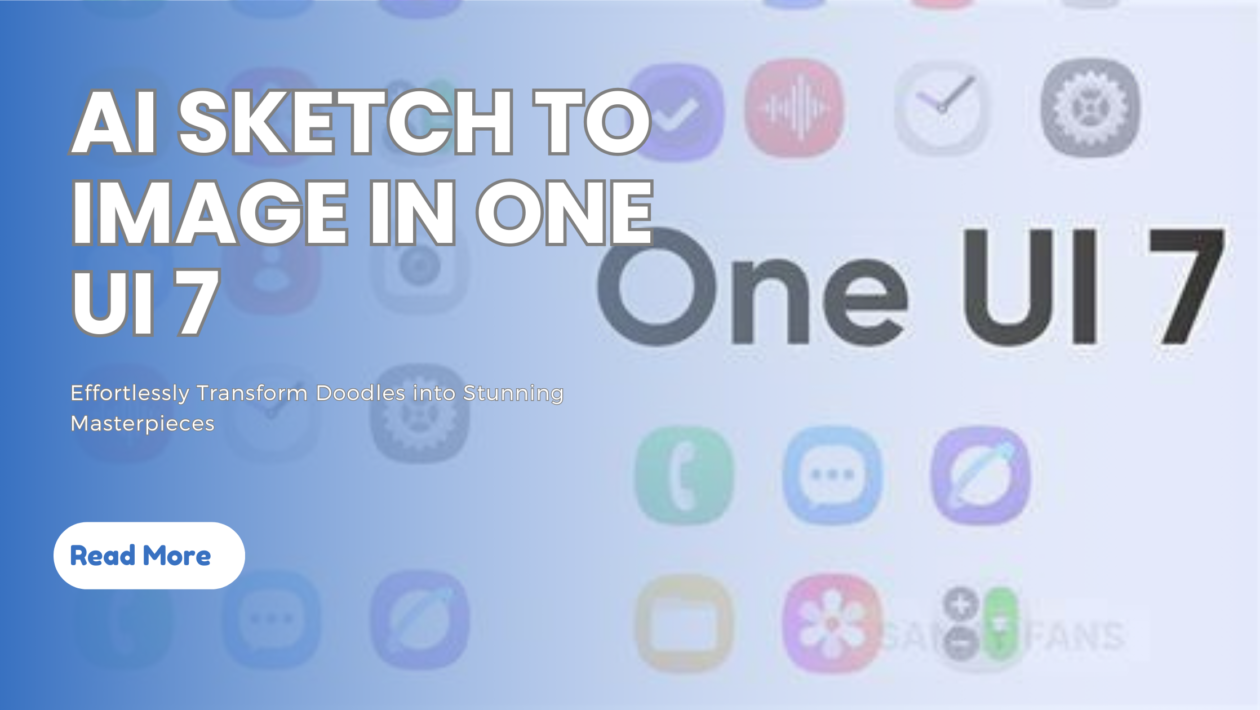In recent years, AI technology has made significant strides, particularly in the realm of digital art and creative expression. Among the most exciting advancements is the ability to convert simple sketches into highly detailed images, a feature integrated into One UI 7, Samsung’s latest user interface for smartphones and tablets. This new tool, powered by AI, allows artists, designers, and even casual users to transform rough sketches into professional-grade artwork with remarkable ease and speed. This article delves into the technology behind AI sketch-to-image conversion in One UI 7, its benefits, practical applications, and the implications it holds for the future of digital creativity.
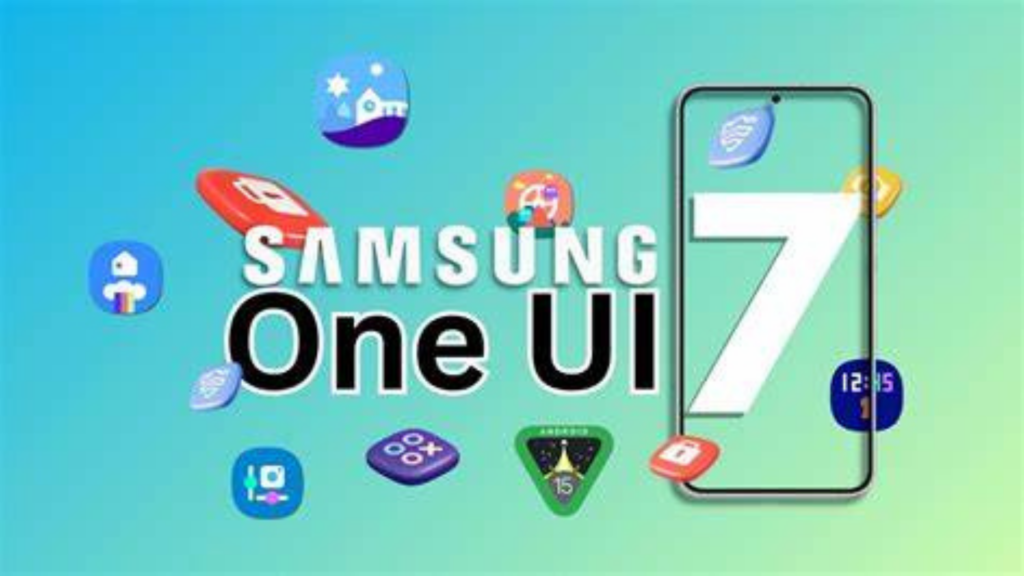
AI Sketch to Image Technology: How Does It Work?
One UI 7 integrates AI-powered sketch-to-image tools that are revolutionizing digital art creation. At the core of this feature is deep learning, which allows the AI to recognize and enhance basic sketches into fully realized, detailed images. Using neural networks, the system learns from vast amounts of artistic data, enabling it to fill in missing details, correct proportions, and add textures or colors. The transformation happens in seconds, offering users a seamless experience with minimal effort.
One of the most fascinating aspects of this AI-powered tool is its ability to recognize and interpret various sketch styles—whether it’s a rough doodle or a more refined outline. By analyzing key visual elements such as shape, texture, and shading, the AI produces an output that mimics the artistic style chosen by the user. Whether the user wants a hyper-realistic rendering or a more stylized, artistic interpretation, the AI can accommodate a wide range of creative preferences.
The Key Features of AI Sketch to Image in One UI 7
One UI 7’s AI sketch-to-image tool includes several key features that set it apart from other digital art applications:
Sketch-to-Image Conversion:
The heart of the feature, this tool instantly converts basic sketches into full images. This is ideal for artists who want to quickly visualize their concepts without spending hours on intricate detailing.
Customizable Art Styles
Users can select different art styles to suit their project, ranging from realistic to abstract. Whether you’re aiming for a digital painting or a comic book style, the AI adapts the sketch accordingly.
Layered Editing
One UI 7 includes an advanced layering system that allows users to adjust each element of their image separately. After the AI renders the image, artists can tweak details such as colors, lighting, and textures.
AI-Powered Enhancements
The AI doesn’t just convert sketches into images—it enhances them too. With intelligent suggestions, it can refine certain aspects of the image, ensuring that shadows, light, and textures align correctly.
Speed and Efficiency
One of the biggest draws of the AI-powered sketch-to-image tool is its speed. Users can get a high-quality image in seconds, saving them time and effort compared to traditional drawing or digital painting.
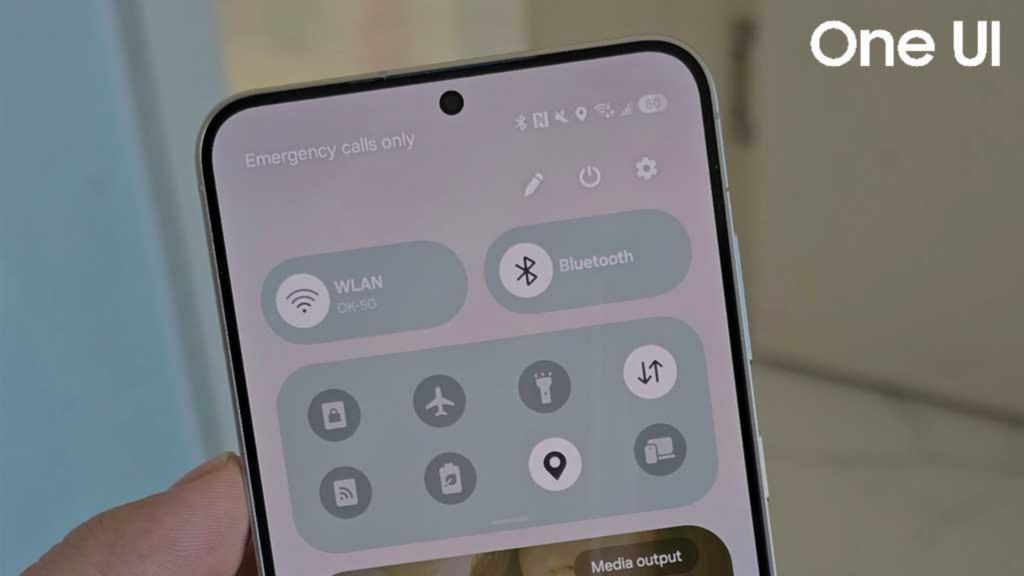
The Impact of AI Sketch to Image on Digital Creatives
The integration of AI sketch-to-image conversion in One UI 7 has far-reaching implications for digital creatives. Whether you’re a professional artist or someone with a casual interest in digital design, this technology allows you to push your creative boundaries without technical constraints.
Increased Productivity
With AI handling the time-consuming aspects of digital creation, artists can focus on refining their ideas and pushing their creative boundaries. Tasks that once took hours can now be completed in mere minutes.
Accessibility for Non-Artists
Not everyone is a trained artist, but One UI 7’s AI sketch-to-image tool allows anyone with an idea to create beautiful, professional-level artwork. The tool opens up new possibilities for writers, content creators, and anyone looking to visualize concepts or products.
Collaboration and Prototyping
The AI sketch-to-image feature is not only useful for individual artists, but also for teams working on projects. Designers, marketers, and developers can use the tool to prototype designs quickly, iterate on concepts, and collaborate with ease.
Case Studies and Examples of AI Sketch to Image in Action
To better understand how this technology is being used in real-world scenarios, let’s look at some examples of AI sketch-to-image tools in action within One UI 7.
Product Designers
A product designer sketches out an initial idea for a new gadget. Using One UI 7’s AI-powered tool, the designer quickly generates a 3D render of the device. They can then refine the design, making adjustments based on feedback and visualizing their ideas in high detail.
Concept Artists in Film
Filmmakers often require concept art to visualize scenes or characters for movies. With AI sketch-to-image technology, a concept artist can sketch a rough outline of a character or environment and use the tool to generate a highly detailed image, making the process faster and more efficient.
Marketing Teams
A marketing team working on an ad campaign uses AI to quickly generate image mock-ups, allowing them to test different designs, layouts, and visual styles without needing to rely on professional photographers or designers.
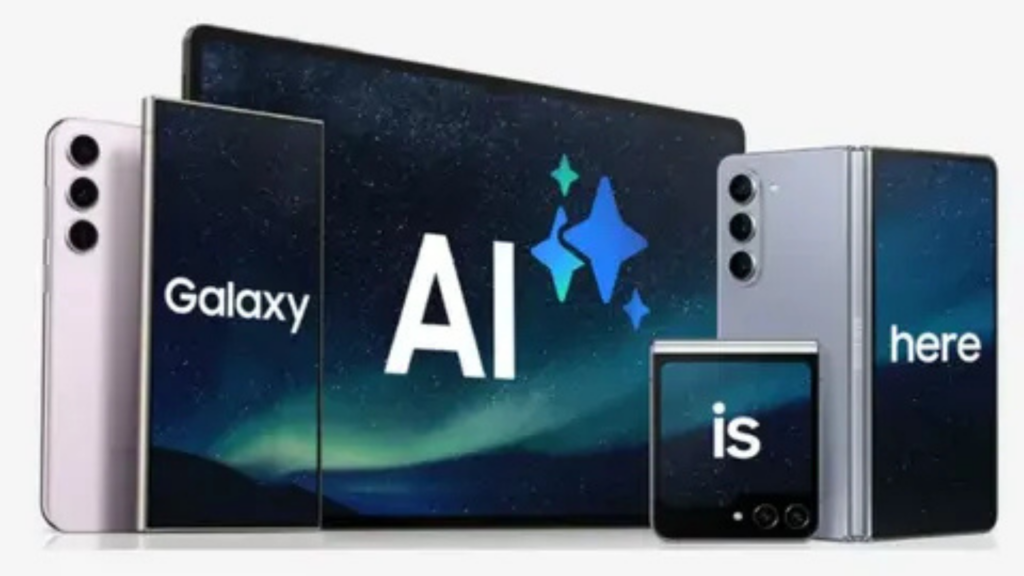
The Role of AI in Democratizing Digital Art
One of the most exciting aspects of AI-powered tools like sketch-to-image conversion is their ability to democratize digital art. Traditionally, creating high-quality artwork required years of practice, technical knowledge, and often expensive software. With AI-powered tools, however, anyone can produce impressive art, regardless of their experience level.
This shift has the potential to open up new creative opportunities for individuals who may not have otherwise considered pursuing digital art. For example, a writer who needs illustrations for their book can now create images to accompany their text without hiring a professional artist. Similarly, small business owners can design logos and marketing materials without the need for expensive design services.
Potential Challenges and Considerations
While AI sketch-to-image technology is undeniably powerful, it is not without its challenges. One potential issue is the loss of the personal touch that comes with traditional hand-drawn art. While the AI can generate detailed images quickly, it may struggle to replicate the subtle nuances that a human artist can bring to a piece.
Moreover, there are concerns about over-reliance on AI in the creative process. While AI tools can help enhance and speed up creation, they cannot replace the emotional connection, intuition, and creativity that human artists bring to their work.
How AI Sketch to Image Is Shaping the Future of Design and Art
The introduction of AI-powered sketch-to-image conversion in One UI 7 is just the beginning of a larger trend toward AI-assisted creativity. As technology continues to evolve, we can expect even more advanced tools that will allow artists to explore new realms of creativity and innovation.
In the future, AI could enable a more seamless integration between human creativity and machine intelligence. Rather than seeing AI as a replacement for human artists, we may witness a collaboration between the two, with AI assisting artists in realizing their creative visions more efficiently.
The Broader Implications of AI on Creative Industries
As AI sketch-to-image tools like the one in One UI 7 continue to evolve, their impact will likely extend far beyond individual artists and hobbyists. In industries such as advertising, fashion design, video game development, and virtual reality, AI-driven tools will play an increasingly pivotal role. Designers will use these tools to prototype faster, visualize concepts with greater ease, and test different design iterations.
Moreover, AI will enable more personalized and innovative designs, tailored specifically to target audiences, all while maintaining high levels of quality and creativity. In the fashion industry, for instance, AI could help designers generate concept pieces or visualize how clothing patterns will look when made into finished garments. Ultimately, the potential for AI sketch-to-image technology to streamline workflows and fuel innovation across industries is vast and exciting, marking the beginning of a new era for creative professionals worldwide.
The Role of AI in Revolutionizing User Interfaces and Personal Creativity
AI-powered sketch-to-image technology integrated into One UI 7 represents a major leap forward not just in the realm of digital art but in how user interfaces (UI) can be designed to empower individual creativity. Traditionally, user interfaces have focused primarily on functionality and ease of use, but with AI, the emphasis is also on enhancing user experience by providing tools that cater to personal creativity and innovation. One UI 7’s AI sketch-to-image tool is an excellent example of this shift in focus. By embedding powerful AI tools directly into the user interface of smartphones and tablets, Samsung has democratized the creative process, making it accessible to everyone—from professional designers to casual users with little or no artistic training.
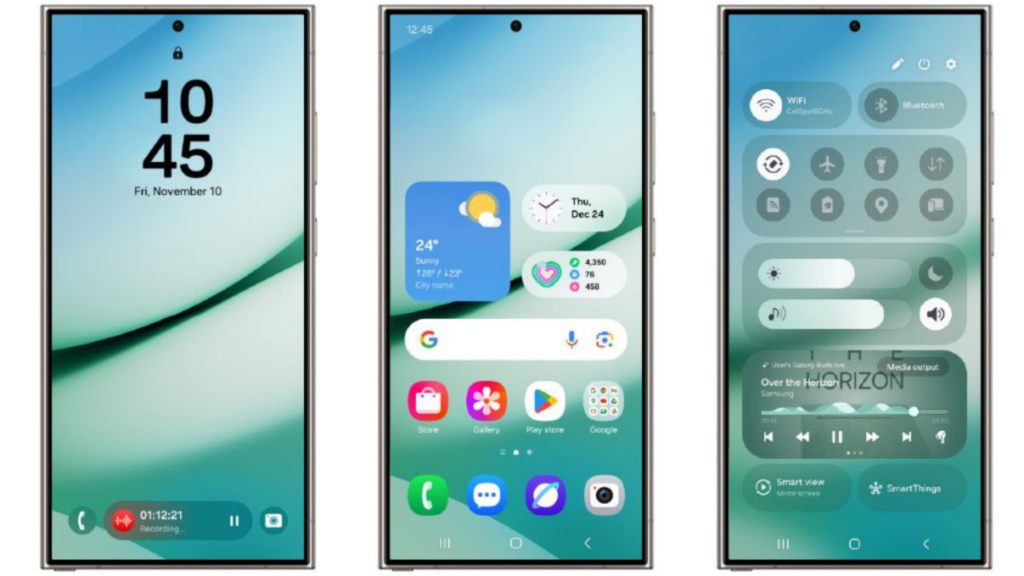
Significance of One UI 7
In the past, creating high-quality digital art required expensive software and specialized skills. Tools like Adobe Photoshop or Procreate, while powerful, come with steep learning curves and often demand a high level of technical expertise. However, with One UI 7, the integration of AI sketch-to-image features has significantly lowered the barriers to entry, allowing users to create professional-grade artwork directly from their devices without needing to master complicated software. The simplicity and speed of this process is a game-changer, especially for people who may have had limited access to the traditional resources needed to explore their creativity.
One key aspect of One UI 7’s sketch-to-image tool is how it adapts to the user’s skill level. For beginners or those without formal training in digital art, the AI provides a supportive environment where users can start with basic sketches and gradually improve their work. The AI’s ability to instantly generate detailed, high-quality images from a rough sketch allows users to visualize their ideas much faster than traditional methods. This not only encourages experimentation but also fosters confidence in users, as they can see their sketches transformed into polished artworks without feeling intimidated by the technical aspects of digital design.
For professional designers and artists, AI sketch-to-image technology offers new ways to streamline the creative process. Designers working on concept art, marketing materials, or product designs can use One UI 7’s AI to quickly generate multiple variations of an image or mock-up, allowing them to visualize different possibilities in a fraction of the time it would normally take. The AI can also help with the refinement of details—correcting proportions, adding textures, and adjusting lighting—allowing the artist to focus on the overall concept rather than getting bogged down in minute details. The ability to generate and iterate on designs so quickly means that designers can experiment more freely, incorporating feedback from clients or collaborators in real time.
Conclusion: The Future of AI in Creative Expression
AI sketch-to-image technology in One UI 7 has introduced a powerful tool for creatives, providing new ways to generate high-quality digital artwork. Whether for professional designers, hobbyists, or anyone in between, this tool offers speed, flexibility, and creativity without technical barriers. As AI continues to advance, we can expect even more transformative changes in how we create, collaborate, and visualize ideas.
While there are still challenges to overcome, the potential for AI to enhance and democratize the creative process is vast. As technology advances, AI will not only continue to make digital creation more accessible but also help foster new forms of creative expression that were previously unimaginable. The fusion of human ingenuity with AI capabilities marks the beginning of an exciting new chapter in the world of design and art, one where the possibilities for creativity are endless.
FAQ
1. What is AI Sketch to Image in One UI 7?
AI Sketch to Image in One UI 7 is a feature that uses artificial intelligence to transform basic sketches into highly detailed images. It leverages deep learning algorithms to analyze the sketch and enhance it into a polished, professional-looking image.
2. Who can use the AI Sketch to Image tool in One UI 7?
The tool is available to anyone using One UI 7, whether you are an artist, designer, or casual user interested in creating digital art. Its user-friendly interface makes it accessible even for those with little artistic experience.
3. How accurate is the AI in converting sketches to images?
The AI in One UI 7 is highly accurate, thanks to its deep learning capabilities. It can analyze and interpret various sketch styles and turn them into detailed images with high precision.
4. Can I customize the style of the generated image?
Yes, One UI 7 offers various art styles to choose from, allowing you to customize the look of your image. Whether you want a realistic rendering or a more artistic, abstract style, the AI can accommodate different preferences.
5. Will AI replace human artists in the future?
While AI tools like sketch-to-image can significantly enhance the creative process, they are unlikely to replace human artists. The emotional depth, intuition, and unique perspectives that artists bring to their work are irreplaceable, and AI will more likely serve as a complement to human creativity rather than a replacement.

